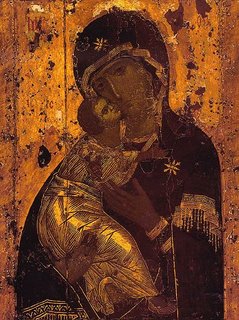Ryszard Kapuscinski, 1932-2007.
It's sometimes said that deaths come in threes, and perhaps that explains why this is the third obituary I've posted in the last couple weeks. Polish journalist Ryszard Kapuscinski, justly hailed as "the doyen of foreign correspondents everywhere" and "an unsurpassed chronicler of the Third World," died in Warsaw on January 23rd. I only got the news a couple ago, when I spied a terse memorial tribute published in the New York Times by Kapuscinski's American publisher, Alfred A. Knopf. As a reporter for the Polish Press Agency, Kapuscinski witnessed many of the assassinations, civil wars, coups and revolutions that accompanied the Third World's transition from colonialism to independence. Beginning in the late-1970's, Kapuscinski penned a series of lyrical and deeply reflective books on his experiences. He first began to attract widespread notice at home and abroad with the publication of The Emperor, an impressionistic account of the fall of Ethiopia's Haile Selassie that struck many Poles as an allegorical indictment of their own country's Communist rulers. In The Emperor and in a subsequent book on the 1979 revolution in Iran, Shah of Shahs, Kapuscinski sought to explain events through the testimony of people who lived through them, eschewing a comprehensive narrative in favor of revealing (and often very poignant) vignettes. In other books like Another Day of Life, The Soccer War, and The Shadow of the Sun, Kapuscinski wrote in his own voice but retained his concern for the impact that political turmoil has on individuals' lives. With the fall of Communism, Kapuscinski was at last able to write freely about life under Soviet domination in Imperium and in other books that have yet to be translated into English. (Though Kapuscinski's translated work has attracted widespread acclaim in the West, only a fraction of his total output is available in any language other than Polish.) Through his work, Kapuscinski sought to bridge the gap between different nations and cultures. However, near the end of his life he expressed concern that "in spite of advances in communication and communication technologies, our knowledge of each other - contrary to the common myth - remains highly superficial, most often non-existent... We do not live in a global village, but rather in a global metropolis, a global train station inundated with 'a crowd of loners' - anxious people who would wish to know each other and develop close relationships."
I was introduced to Kapuscinski's work as a junior in high school, when I read The Emperor for a paper I was writing on Haile Selassie. That book got me hooked, and in short order I read everything else I could find by Kapuscinski. As a teenager with a thirst for foreign travel and a particular desire to go to Africa (where I still have not been), I was enthralled by Kapuscinski's accounts of a fascinating and sometimes dangerous world. In time, I grew to appreciate more and more the literary craft of his work even as I continued to enjoy his accounts of harrowing escapes and meetings with unusual people. As a senior at Georgetown, I almost went to see Kapuscinski give a talk at the National Press Club in conjunction with the American release of The Shadow of the Sun. For reasons I no longer remember - perhaps I had a paper to write or an exam the following day - I chose not to attend that talk, to my everlasting regret. Though all of Kapuscinski's books deserve multiple readings, the one I most appreciate going back to is Another Day of Life, an account of the end of Portuguese rule in Angola. I commend Another Day of Life - as well as Kapuscinski's other books - to your attention. With the death of Ryszard Kapuscinski, the world has lost a literary titan. While I am sad that he is no longer among us, I will always be grateful for the gift of his work. Requiescat in Pace. AMDG.



